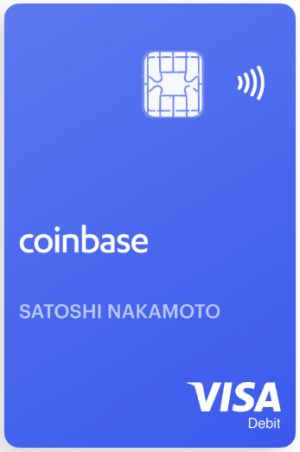Binance just released their new product, the Binance Card, meant to make it easier for people to use crypto every day, that way assisting crypto adoption. Meanwhile, another major crypto exchange, Coinbase, passed this milestone a year ago.
Binance unveiled the Beta version of its Binance card, a Visa debit card, on March 26, which is supposed to do away with the inconvenient methods for buying stuff with crypto that people had to use so far. CEO Changpeng Zhao (CZ) said that payments is an obvious use case for crypto, but that adoption is slow, as only 0.1% of people have crypto, which gives no incentive to merchants to accept it, which in turn lead to fewer people using crypto for payments. The problem is solved with this card, he says, as merchants get their fiat and users pay in crypto. He shared a video of the card in action.
Do you want one of these? ?
Sign up now: Credit card https://t.co/LszTKBM6MH https://t.co/sgLmfK6t2a pic.twitter.com/4wmRiD6A8e
— CZ Binance ??? (@cz_binance) March 26, 2020
Meanwhile, Coinbase entered this new business area back in April 2019, at which time, their card was available only for the UK clients. They have some time on Binance though, so their card has expanded its reach and offering since.
Let’s do a quick comparison of the two cards.
Where is it available?
Importantly, the Binance Card is, for now, available as a virtual card in a Beta version, says the exchange. The physical card, they add, will come “shortly.” That said, people will be able to use the card in-person and online, for anything, from groceries to bills. The card, issued by Visa, is accepted by more than 46 million merchants, both offline and online, in 200 regions and territories. The initial release of the card is planned for Malaysia, followed by Vietnam, and other countries globally “within the next few weeks.”
Meanwhile, Coinbase’s card has been spreading its reach since the launch and is available in 29 European countries, and its working on expanding to additional markets, according to their FAQ. It too can be used wherever Visa is accepted, online, offline, and internationally, with millions of merchants, as well as ATMs for cash withdrawals.
How does it work?
Both cards work by allowing the customer to pay with their crypto, but then converting that crypto to fiat upon the completion of the purchase, that way making the merchants happy too.
A user needs to use the Binance Card App to load the card with funds, by transferring coins from their Binance.com wallet to the Binance Card wallet, as “simple as transferring BNB from one wallet to another.” This is the balance the card will use for payments, automatically deducting all expenses from the balance every time a payment is made. This also means that the card’s internal balance will be in cryptoassets.
Similarly, once the Coinbase Card iOS or Android App is downloaded, it needs to be connected to an account, upon which the virtual card can be used immediately, while the physical one will be sent to the user’s address. The app allows the user to switch between crypto wallets they want to pay with.
What cryptos can be used?
Binance’s press release for now mentions only binance coin (BNB) and bitcoin (BTC).
Coinbase Card supports nine coins: BTC, ETH, LTC, BCH, XRP, BAT, REP, ZRX, and XLM.
What are the fees?
Binance Card comes with a one-time cost of USD 15, says the exchange, payable in the form of initial top-up from the user’s crypto wallet to the Binance Card balance. Once USD 15 worth of BNB or BTC is transferred to the card balance, the order is processed. There are no monthly or annual fees, they say. No other details are available yet.
At the time of launch, Coinbase’s GBP 4.95 (USD 6.48) card issuance fee was waived for the first 1,000 customers. Coinbase Card issuance fee is also covered by that first transfer, so the minimum of GBP 5 / EUR 5 is needed on the card balance to get started. The users can withdraw up to GBP 200 / EUR 200 per month for free, while amounts larger than that are charged 1% for domestic and 2% for international cash withdrawals. Domestic purchase transactions are free, while others are charged 0.20%-3%.
Additional features

Coinbase Card comes with a Coinbase Card App, which offers users instant receipts, transaction summaries, spending categories, etc. Binance too, as said, has users go through the Binance Card App to top-up their card balance, and this app lets them manage funds, card security, and spending.
Coinbase Card comes with daily spending and ATM withdrawal, as well as monthly and yearly purchase limits. There’s no information of that kind available for Binance Card yet.
Google Pay is available for Coinbase Card users in fifteen countries. Coinbase also hit a major milestone when it became a Visa principal member last month.
Both cards require verification to be completed.
And as to why anybody would be purchasing anything with a volatile crypto, the adoption-pushing CEO CZ said it’s because there are people who only have crypto in their wallets.
Cuz they only keep crypto.
If you only keep crypto, it’s fiat that fluctuates like crazy.
— CZ Binance ??? (@cz_binance) March 26, 2020
Meanwhile, Crypto.com (MCO) has announced some ten days ago that its MCO Visa Card is being shipped to customers in the United Kingdom. Also, in December 2019, trading and investing platform eToro confirmed to Cryptonews.com that they are working on a debit card.
